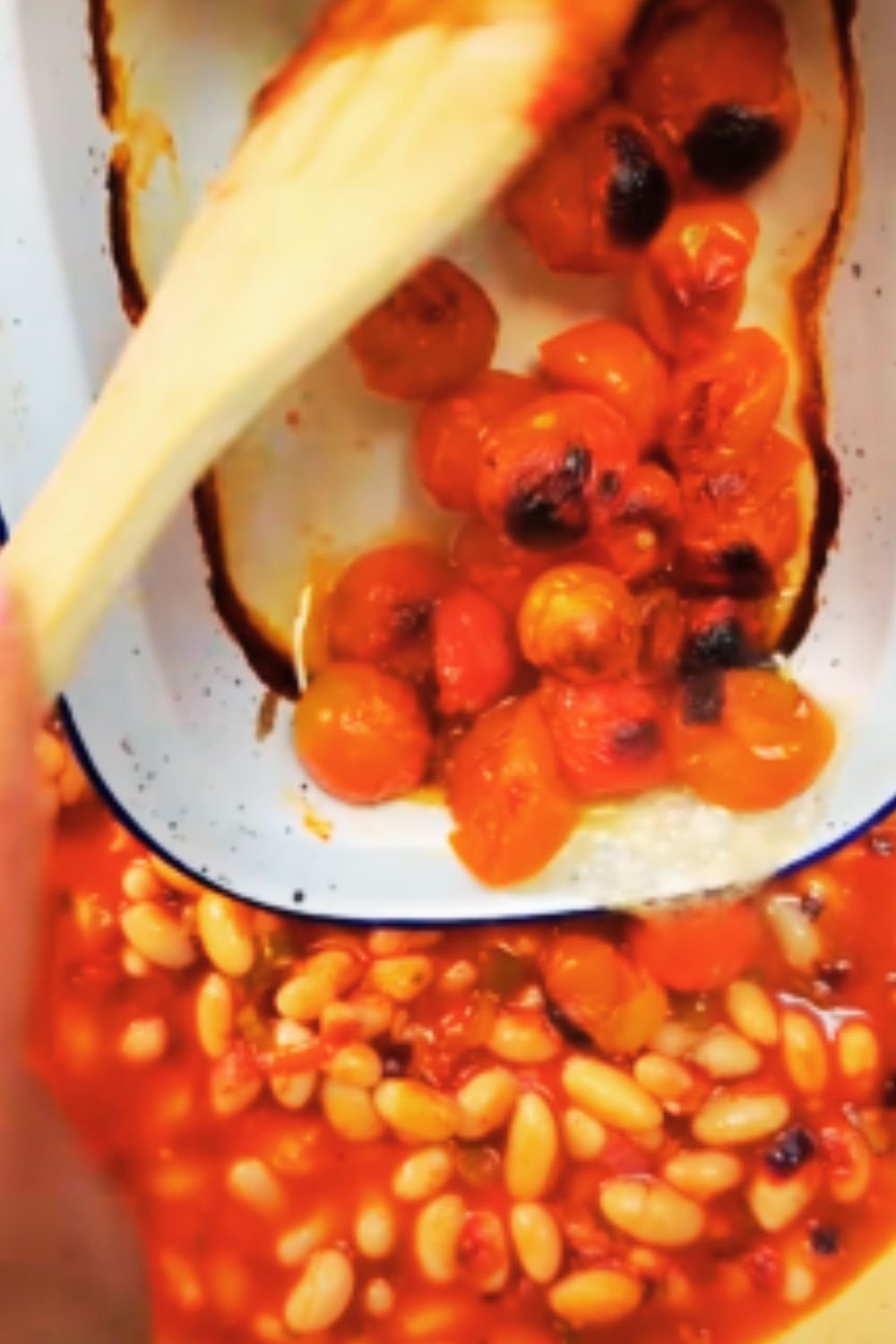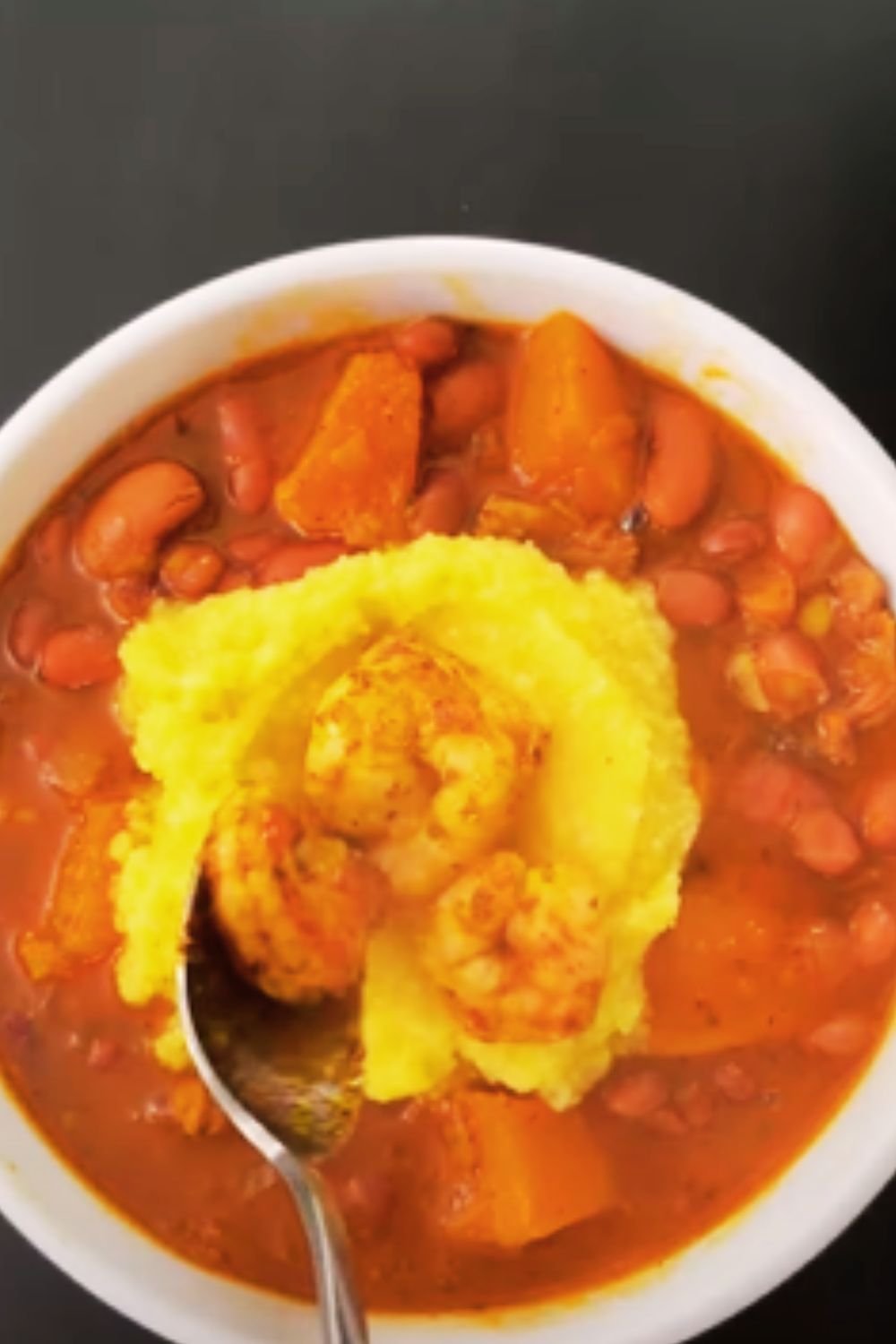There’s something magical about the combination of bubbling tomato sauce, creamy white beans, and melted cheese that makes my heart sing. When the weather turns chilly or I’m craving something that feels like a warm hug, this Cheesy White Bean Tomato Bake is my go-to recipe. It’s a dish that bridges the gap between rustic Italian cooking and modern comfort food, creating something that’s greater than the sum of its humble parts.
I stumbled upon this recipe during a particularly cold winter when I was searching for budget-friendly meals that didn’t skimp on flavor. Little did I know it would become a staple in my kitchen rotation, requested by friends and family alike whenever they visit. The beauty of this dish lies in its simplicity—pantry staples transformed into something extraordinary with minimal effort but maximum impact.
In this article, I’ll walk you through everything you need to know to create this crowd-pleasing dish. From ingredient selection to serving suggestions, I’ve got you covered. I’ll even share some variations to keep things interesting if this becomes a regular in your meal planning (and trust me, it might!).
What Makes This Dish Special
Before we dive into the recipe itself, let’s talk about why this dish deserves a spot in your cooking repertoire:
- Pantry-Friendly: Most ingredients are shelf-stable items you likely already have on hand.
- Budget-Conscious: Beans provide protein at a fraction of the cost of meat.
- Versatile: Works as a main dish, side dish, or even as a dip with crusty bread.
- Make-Ahead Friendly: Can be prepped in advance and baked when needed.
- Nutritionally Balanced: Provides protein, fiber, and vegetables in one dish.
The combination of sweet-acidic tomatoes, creamy beans, aromatic herbs, and gooey cheese creates a flavor profile that’s both comforting and sophisticated. It’s rustic Italian cooking at its finest—simple ingredients treated with respect to create something magical.
Essential Ingredients
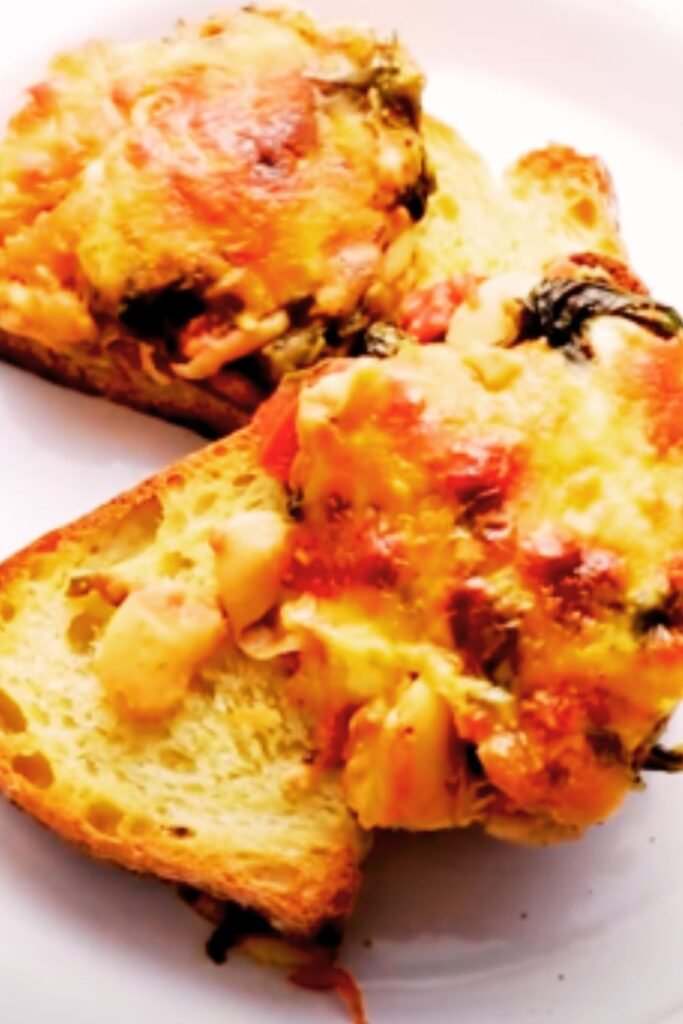
Let’s break down the star players in this culinary symphony:
White Beans : The foundation of our dish, white beans bring protein, fiber, and a creamy texture. I prefer cannellini beans for their buttery texture and mild flavor, but great northern beans or navy beans work beautifully too. Each variety brings its own subtle character to the dish.
Tomatoes : The acidic counterpoint to our creamy beans. I recommend using a combination of canned crushed tomatoes for the sauce base and cherry tomatoes for bursts of sweet flavor throughout the dish. San Marzano tomatoes, if you can find them, add an exceptional depth of flavor.
Aromatics : Onions, garlic, and herbs form the flavor foundation. Fresh garlic is non-negotiable here—it brings a pungency that powdered simply can’t match. As for herbs, fresh is ideal, but dried works in a pinch (just use about a third of the amount).
Cheese : The crowning glory that transforms this from a bean stew to a crave-worthy bake. I recommend a combination: mozzarella for meltability, parmesan for nutty depth, and perhaps a touch of fontina for complexity if you’re feeling fancy.
Olive Oil : Not just any oil but a key flavor component. Use the best quality extra virgin olive oil you can afford for this dish—you’ll taste the difference.
Complete Ingredient List
For a standard 9×13 inch baking dish (serves 6 as a main, 8-10 as a side):
- 3 tablespoons extra virgin olive oil, plus more for drizzling
- 1 large yellow onion, finely diced (about 1½ cups)
- 6 garlic cloves, minced or pressed
- 1 teaspoon red pepper flakes (adjust to your heat preference)
- 2 tablespoons fresh thyme leaves (or 2 teaspoons dried)
- 2 tablespoons fresh rosemary, finely chopped (or 2 teaspoons dried)
- 1 tablespoon tomato paste
- 1 can (28 oz) crushed tomatoes, preferably San Marzano
- 3 cans (15 oz each) cannellini beans, drained and rinsed
- 1 cup vegetable broth
- 1 pint cherry tomatoes, halved
- 2 cups shredded mozzarella cheese
- 1 cup freshly grated Parmesan cheese
- ½ cup fontina cheese, shredded (optional)
- ¼ cup fresh basil leaves, torn
- Salt and freshly ground black pepper, to taste
- Zest of one lemon
- 1 tablespoon balsamic vinegar (the best quality you have)
Equipment Needed
To prepare this dish effectively, you’ll need:
- 9×13 inch baking dish (ceramic or glass works best)
- Large skillet or Dutch oven
- Cutting board and sharp knife
- Cheese grater
- Measuring cups and spoons
- Wooden spoon or spatula
- Can opener
- Colander for draining beans
Step-by-Step Preparation Method
Let me walk you through creating this delicious dish:
- Preheat and Prepare
- Set your oven to 375°F (190°C)
- Lightly oil your baking dish
- Create the Flavor Base
- Heat olive oil in a large skillet over medium heat
- Add diced onion and cook until translucent, about 5-7 minutes
- Add minced garlic, red pepper flakes, thyme, and rosemary
- Cook until fragrant, about 1-2 minutes, stirring constantly to prevent garlic from burning
- Build the Sauce
- Add tomato paste and cook for 1-2 minutes, stirring frequently (this caramelizes the paste, deepening flavor)
- Pour in crushed tomatoes
- Add balsamic vinegar
- Season with salt and freshly ground black pepper
- Simmer for 10 minutes, allowing flavors to meld
- Incorporate the Beans
- Add drained and rinsed cannellini beans
- Pour in vegetable broth
- Fold in cherry tomato halves
- Simmer for another 5 minutes
- Taste and adjust seasoning as needed
- Assemble for Baking
- Transfer mixture to prepared baking dish
- Sprinkle lemon zest evenly over the top
- Cover with an even layer of the cheese mixture (reserve about ¼ cup of Parmesan for later)
- Drizzle lightly with olive oil
- Bake to Perfection
- Bake uncovered for 25-30 minutes until bubbly
- Switch to broiler for final 2-3 minutes to achieve golden brown cheese (watch carefully!)
- Remove from oven and let stand for 5-10 minutes
- Sprinkle with remaining Parmesan and torn fresh basil before serving
The Science Behind the Magic
Understanding what’s happening in your baking dish can help you perfect this recipe. Here’s some food science to consider:
The Maillard Reaction: When cheese browns under heat, it undergoes this reaction, creating hundreds of new flavor compounds. This is why that golden-brown top layer is so delicious!
Flavor Development in Tomatoes: Cooking tomatoes breaks down cell walls, releasing lycopene (the antioxidant that gives tomatoes their red color). This process actually makes lycopene more bioavailable, making cooked tomatoes healthier than raw in some ways.
Bean Chemistry: Beans release starches during cooking that help thicken the sauce naturally. The combination of bean starch and tomato pectin creates the perfect consistency—not too runny, not too thick.
Nutritional Highlights
This dish isn’t just delicious; it’s nutritionally impressive too. Here’s a breakdown of what you’re getting:
| Nutrient | Amount Per Serving | Benefits |
|---|---|---|
| Protein | 18g | Supports muscle maintenance and satiety |
| Fiber | 12g | Promotes digestive health and satisfaction |
| Vitamin C | 35% DV | Supports immune function |
| Calcium | 30% DV | Essential for bone health |
| Iron | 25% DV | Critical for oxygen transport in blood |
| Lycopene | 18mg | Powerful antioxidant from tomatoes |
| Folate | 40% DV | Important for cell division and DNA synthesis |
*Values are approximate, based on a main dish serving (⅙ of recipe)
Serving Suggestions
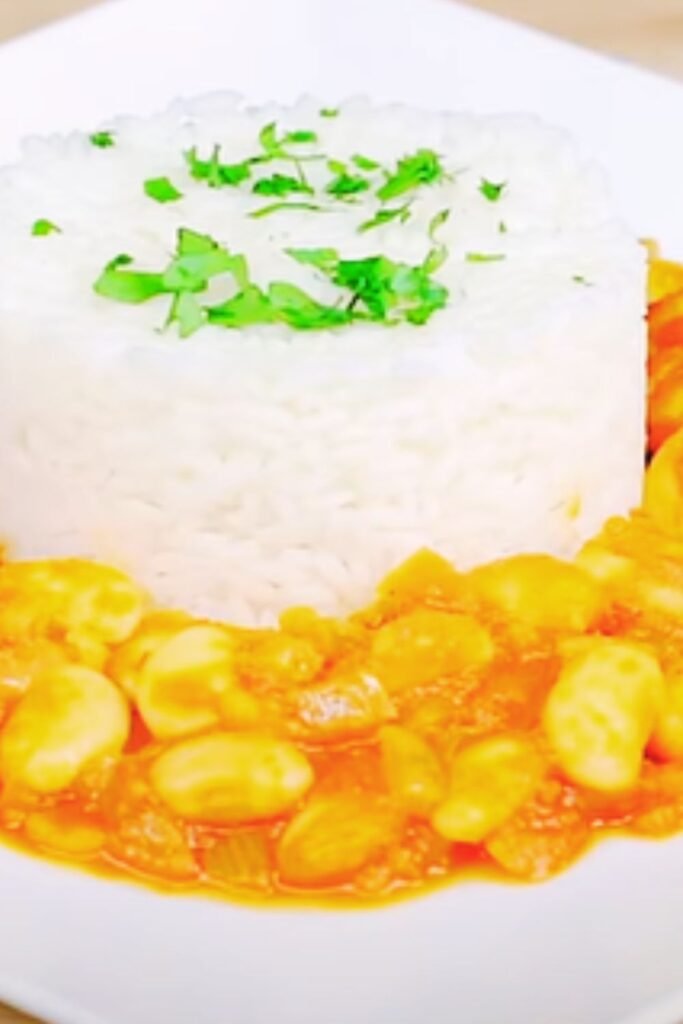
This versatile dish can be served in multiple ways:
- As a main dish with a simple green salad and crusty bread
- Alongside roasted chicken or grilled fish
- As a hearty side dish with other Mediterranean-inspired foods
- Served in smaller portions as an appetizer with toasted baguette slices
- In shallow bowls topped with a poached egg for a stunning brunch option
- With a drizzle of high-quality olive oil and additional fresh herbs
For a complete meal, I love to pair this with a crisp, lemony arugula salad dressed simply with olive oil, lemon juice, and a sprinkle of flaky sea salt. The peppery bite of the arugula perfectly complements the rich, creamy beans.
Make-Ahead and Storage Tips
One of the many virtues of this dish is how well it works with busy schedules:
Make-Ahead Options:
- Prepare the entire bean and tomato mixture up to 2 days ahead, refrigerate, and just add cheese and bake when ready to serve
- Assemble completely (minus final cheese topping) up to 24 hours ahead, refrigerate covered, then bring to room temperature, add cheese, and bake
- Freeze the unbaked, cheese-less mixture for up to 3 months in a freezer-safe container
Storage Solutions:
- Refrigerate leftovers for up to 4 days in an airtight container
- Freeze baked leftovers for up to 2 months, though the texture of the cheese may change slightly
- Reheat in a 350°F oven until heated through (about 20 minutes from refrigerated, longer from frozen)
Reviving Leftovers:
- Add a splash of broth when reheating to restore moisture
- Top with fresh cheese before reheating for a renewed cheese pull
- Repurpose leftovers by spreading on toast for a sophisticated beans-on-toast variation
Variations to Keep Things Interesting
While the classic recipe is perfect as is, here are some variations to explore:
Mediterranean Twist
- Add ½ cup pitted Kalamata olives
- Incorporate 1 cup baby spinach
- Use feta instead of fontina
- Finish with fresh oregano instead of basil
Tuscan Influence
- Add 1 cup diced pancetta, browned with the onions (for non-vegetarians)
- Mix in 2 cups chopped kale, stems removed
- Use cannellini beans exclusively
- Add ½ teaspoon fennel seeds to the herb mixture
Spicy Arrabiata Style
- Double the red pepper flakes
- Add 1 diced fresh red chili pepper with the garlic
- Use spicy Italian cheese like Provolone Piccante
- Finish with a drizzle of chili oil
Garden Harvest Version
- Add 1 diced zucchini and 1 diced bell pepper, sautéed with the onions
- Mix in 1 cup fresh corn kernels (summer only!)
- Use a mixture of cherry tomato varieties for color
- Top with fresh herbs from your garden—whatever’s thriving!
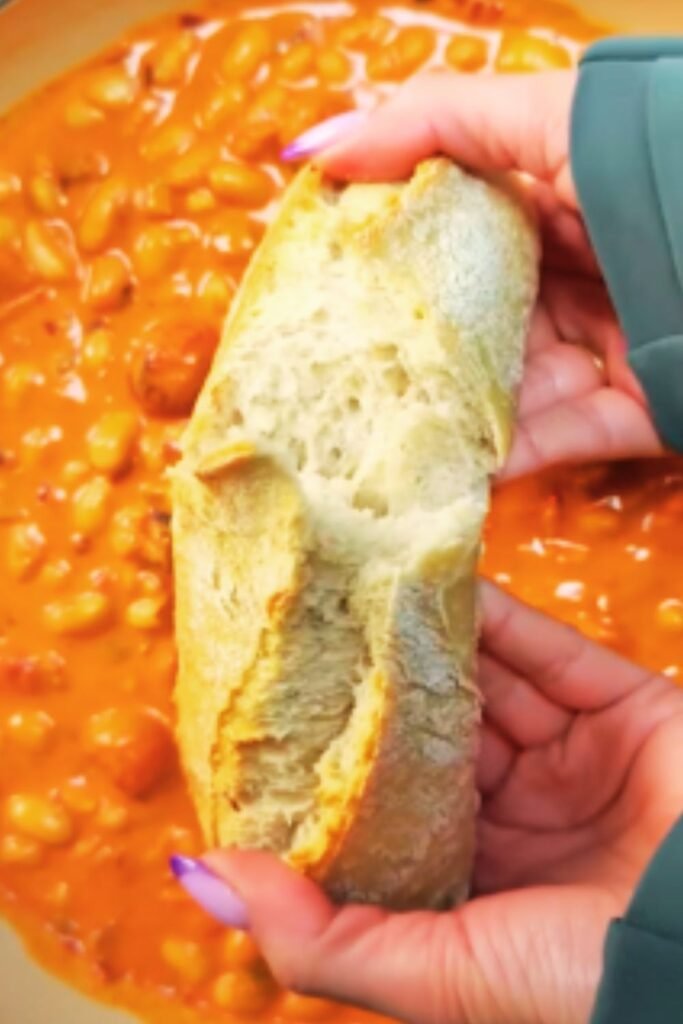
Troubleshooting Common Issues
Even the simplest recipes can sometimes go awry. Here’s how to fix common problems:
| Issue | Possible Cause | Solution |
|---|---|---|
| Too watery | Excess liquid from beans or tomatoes | Simmer uncovered longer before baking or add 1-2 Tbsp tomato paste |
| Too dry | Oven too hot or baked too long | Add ¼-½ cup vegetable broth or tomato sauce before serving |
| Beans still firm | Old beans or insufficient cooking | Simmer mixture longer before baking; next time, consider pre-cooking very old dried beans |
| Bland flavor | Underseasoning or low-quality ingredients | Add more herbs, a splash of vinegar, or an extra pinch of salt; use better quality tomatoes next time |
| Cheese too rubbery | Overbaking or wrong cheese type | Use freshly grated cheese (pre-shredded has anti-caking agents), and don’t overbake |
| Burnt top | Broiler too hot or left unattended | Place rack lower in oven; watch constantly during broiling phase |
Scaling the Recipe
Need to feed a crowd or just cooking for two? Here’s how to scale appropriately:
For a smaller batch (serves 2-3):
- Use an 8×8 inch baking dish
- Reduce all ingredients by half
- Check for doneness 5-7 minutes earlier than the original recipe
For a party-sized batch (serves 12-16):
- Use two 9×13 inch baking dishes
- Double all ingredients
- Keep cooking time the same, but rotate dishes halfway through baking
The Ultimate Dinner Party Strategy
This dish shines at dinner parties because it can be largely prepared in advance, feeds a crowd economically, and never fails to impress. Here’s my strategy for using this recipe as the centerpiece of a dinner party:
- Day Before: Prepare the bean and tomato mixture completely, cool, and refrigerate
- Two Hours Before Guests Arrive: Remove mixture from refrigerator to take the chill off
- One Hour Before Dinner: Assemble with cheese and bake
- Serving Time: Bring the bubbling dish directly to the table (on a trivet!) for a dramatic presentation
- Accompaniments: Serve with a large green salad, crusty bread, and perhaps some roasted vegetables
The communal nature of this dish, with everyone serving themselves from the same beautiful baking dish, creates an immediate sense of warmth and connection.
Seasonal Adaptations
While this is primarily a pantry staple recipe, you can enhance it seasonally:
Summer: Use fresh heirloom tomatoes instead of canned (you’ll need about 3 pounds, blanched, peeled, and chopped). Add fresh corn kernels and basil from the garden.
Fall/Winter: Add roasted butternut squash cubes and sage instead of basil. A pinch of warming spices like nutmeg can add seasonal depth.
Spring: Incorporate spring vegetables like asparagus tips or fresh peas in the last 5 minutes of cooking the sauce. Use fresh chives and dill as finishing herbs.
Questions & Answers
Q: Can I use dried beans instead of canned?
A: Absolutely! You’ll need about 1.5 cups of dried beans, soaked overnight and cooked until tender before using in the recipe. This adds about 1-2 hours of prep time but can improve flavor and texture. Make sure they’re completely cooked before adding to the tomato mixture.
Q: Is this recipe gluten-free?
A: Yes, this recipe is naturally gluten-free, assuming your broth and other packaged ingredients don’t contain gluten. Always check labels if cooking for someone with celiac disease or gluten sensitivity.
Q: Can I make this dairy-free or vegan?
A: For a dairy-free version, use your favorite plant-based cheese substitutes that melt well. Cashew-based cheeses work particularly well here. For a cheese-free version, top with seasoned breadcrumbs mixed with nutritional yeast and olive oil for a crunchy, savory topping.
Q: How spicy is this dish?
A: As written, it has a mild warmth from the red pepper flakes. For a kid-friendly version, reduce or omit the red pepper flakes. For heat lovers, double the amount or add a diced fresh chili pepper.
Q: What’s the best way to reheat leftovers?
A: For best results, reheat in a 350°F oven, covered with foil, for 15-20 minutes until heated through. You can also microwave individual portions, but the texture of the cheese won’t be as good.
Q: Can I add meat to this dish?
A: While wonderful as a vegetarian meal, you can add browned Italian sausage, pancetta, or even shredded rotisserie chicken if desired. Add cooked meat when mixing in the beans.
Q: Which white beans work best?
A: Cannellini beans (white kidney beans) are ideal for their creamy texture and mild flavor. Great Northern beans or Navy beans are excellent substitutes. Lima beans can work but will create a different texture and flavor profile.
Q: Can I use different cheeses based on what I have?
A: Absolutely! The cheese combination is flexible. Provolone, Gruyère, or even a sharp cheddar can work well. The key is to include at least one cheese that melts smoothly (like mozzarella) and one that adds flavor punch (like Parmesan).
Final Thoughts
There’s something profoundly satisfying about transforming humble ingredients into something that makes people close their eyes with pleasure at first bite. This Cheesy White Bean Tomato Bake does exactly that. It reminds us that good cooking doesn’t always require exotic ingredients or complicated techniques—sometimes it’s about understanding how to coax the best flavor from simple components.
What I love most about this dish is its honesty. It doesn’t pretend to be something it’s not. It’s comfort food that nourishes the body and the soul, the kind of recipe that becomes part of your cooking identity. I hope it finds a place in your regular rotation as it has in mine.
Remember that cooking is as much about intuition as it is about following directions. Use this recipe as a framework, but don’t be afraid to make it your own. Add a pinch more of this, a handful of that—cooking should be a joyful expression of creativity, not a rigid following of rules.
Now go preheat that oven and prepare to create some kitchen magic! I’d love to hear how your version turns out and what personal touches you added to make it your own.
